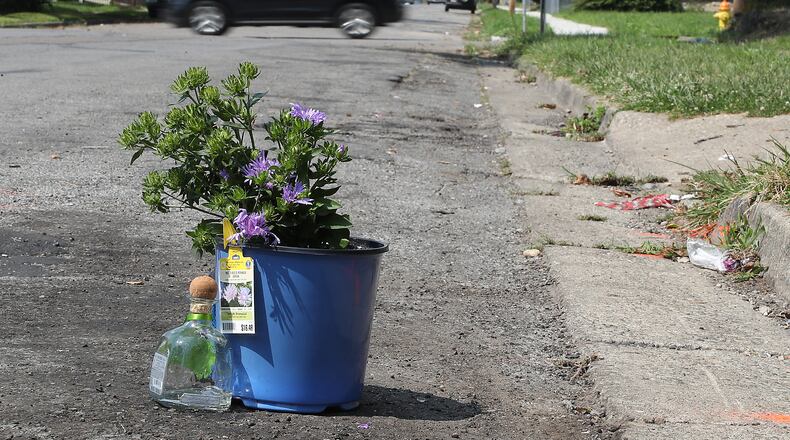Graf also noted that robberies had decreased in the city between 2019 and 2020 and were down by 13 percent.
The number of forcible rapes went from 21 to 16 and then all the way up to 52, between 2018 and 2020. The number of aggravated assaults went from 156 to 153 before increasing to 170 between that same three-year period.
However, Graf said that data is still being collected for 2020 and some of those numbers are subject to change. He said that though the general increases in violent crime in 2020 matches nationwide trends to an extent, the division is still working on what factors have contributed to those increases.
That includes if incidents are being reported at a greater frequency or if recent changes to the division’s computer system has altered how those crimes are classified.
Overall crime, including both violent and property crime, increased by an estimated 3% between 2019 and 2020. However, overall crime reported between 2016 and 2020 has decreased by nearly 25%, Graf said.
But, 2020 saw a spike in homicides in Springfield and its police division reported that number went from 4 to 10 between 2019 and 2020. The amount of murders committed in 2020 was still lower than what was reported in 2018, which saw 12 homicides occur that year.
Graf said it is hard to determine what factors contributed to an uptick in murders in 2020 or why that number dropped from 12 to 4 between 2018 and 2019.
He said those rates often do not coincide with other predictors of crime such as the state of the economy being tied with an uptick in property crimes for example. That makes it hard to associate homicides in the city with a particular pattern.
Graf said the circumstances surrounding those slayings can also vary greatly.
However, the vast majority of homicides that occur in the city are either premeditated or are considered a crime of passion. Graf said these incidents rarely involve a random victim and that motives behind these slayings are usually personal.
In March of 2020, three homicides occurred within two days. Two of the victims, both 19, died following a shooting at a house in the 900 block of Clifton Avenue, according to the Clark County Coroner’s Office.
A 28-year-old woman was found with a gunshot wound to the head in a separate incident that month in the area of 1429 S. Fountain Ave.
Most murders that took place in 2020 where a result of gunshot wounds. Some involved an altercation of some kind taking place before the homicide occurred, Graf noted.
He said homicides in the city often do not happen in a vacuum and in some cases there may be multiple witnesses at a scene. However, getting witnesses to come forward can often times be difficult.
“In the cases where we have witnesses that are talking to officers and sharing information, the solvability rate has been extremely high,” Graf said.
In 2020, six out of the 10 homicides that were investigated remain open. In 2019, one out of the four homicides reported remained open and in 2018, five out of the 12 homicides reported remained open.
Graf said that witnesses coming forward in 2020 did lead to several investigations moving forward. However, without that cooperation, forensic evidence may not be enough to solve a case.
“Sometimes detectives have a good idea of who did it. But, they may not have enough forensic evidence. They need people to come forward,” he added.
That dilemma makes it very important for local law enforcement to build trust in the communities they serve, Graf said.
National incidents as well as social justice protest that occurred across the nation over the summer have highlighted strains between certain police departments and the residents they serve.
Graf said his division has worked to help bridge the gap between law enforcement and the community. He said that includes having the Ohio Bureau of Criminal Investigation handle officer involved incidents in a bid to show transparency. An example includes when officers fire their weapon during an incident.
The Community Police Advisory Team, consisting of residents and community leaders, was also formed last year in an effort to provide another pathway for community input in local policing.
Graf said that residents may feel more comfortable speaking with community leaders associated with the advisory team. He said the hope is that those conversations will encourage more people to cooperate with local police investigations.
Local victim advocates with the Clark County Prosecutor’s Office also form a rapid response team that deal primarily with homicide and sometimes arrive at crime scenes to offer support to grieving families or friends.
The idea is to partner victims’ families with partner agencies as well as provide ongoing support to them, said Tiffany Wright, who is the director of victim witness at the Clark County’s Prosecutor’s Office.
Those victim advocates also deal with victims of other crimes as well. Support provided can include helping to normalize the legal process, connecting victims and their families with financial support as well as helping them through the court process.
Wright said that there can be a sense of mistrust from victims’ families and that can sometimes create a challenge for advocates. She said that there have been efforts to mend relationships, including inviting past victims and their families to come and talk to current ones.
Some members on the team are also victims themselves or have had loved ones that were victims. They sometimes use those experience to help mend relationships and better connect with those they serve, said Wright.
By the numbers:
10 - number of homicides committed in Springfield in 2020
6 - number of Springfield homicide cases reported in 2020 that still remain open
4 - number of homicides that occurred in the city in 2019
About the Author

